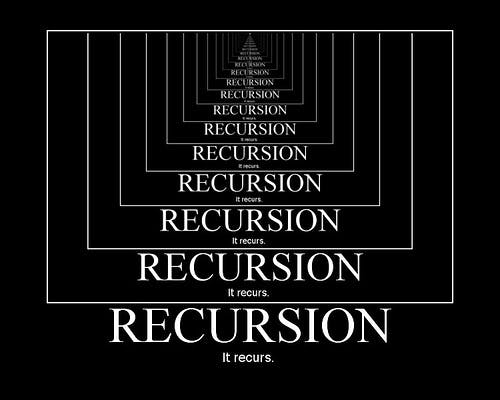
Recursive Closures in PHP
I don’t know how often this comes up, but I recently needed to create a one-off recursive function. Here’s how I did it in PHP.
In this case, I had a set of items that were both nested and could be disabled at any level. So you could have a 3 widgets, all of a type “useful”, and all of the “useful” level widgets were then grouped by “kind”.1 Represented visually something like this:
(Insofar as that graph has any meaning to anyone.)
Imagine this extending outwards, so there were many “types”, each with 2 or 3 widgets, and each “kind” then has 2 or 3 “types”. If any “type” has no widgets, it too gets disabled; same for “kind.” And obviously, the total universe of things has many kinds.
My problem was that these items could be disabled at any time, at any level, and when that happens, it and all of its “children” needed to be removed. Given our particular data structure, this turned into a 3 step process, but the first was to check for deactivated items.
So we need to go through each item, and check that it is both active (as per the dates set) as well as has children (except for the widget level). Ultimately, we needed to write a function that’s used in this one context.
The obvious solution is to just create a method that has a name that could be called, which is certainly doable but not really necessary if you have a very small method that’s only used once.
Another option is to use a closure. In JavaScript, it’s pretty easy to write one of these, as the variables within the function’s scope are accessible when the function is run:
But we can’t do this as directly in PHP, because we don’t have closure scoping, and its closest equivalent, the use statement will throw an error if the variable hasn’t been defined when it’s made available to the closure at runtime. In order to get around this, we need to pass the name of the variable by reference:
This makes the $remove variable function kind of like JavaScript’s closure scoping. At the time the closure is defined, the reference is to the value of a variable that doesn’t exist yet. When the closure is executed, the reference will be the closure assigned to that variable.2 You’re using the same variable within the closure as outside. This way, the closure can use and call itself recursively, until it’s done what it needs to do.
And that’s how you do recursive closures in PHP.
Just note one thing: with XDebug turn on, the stack depth is limited to 200, and it will error out if it goes deeper than that. You can increase it, obviously, in your php.ini settings; otherwise, PHP’s max stack depth is limited by its memory allocation at runtime, generally speaking. On the other hand, JavaScript’s max stack depth varies by browser and implementation.
